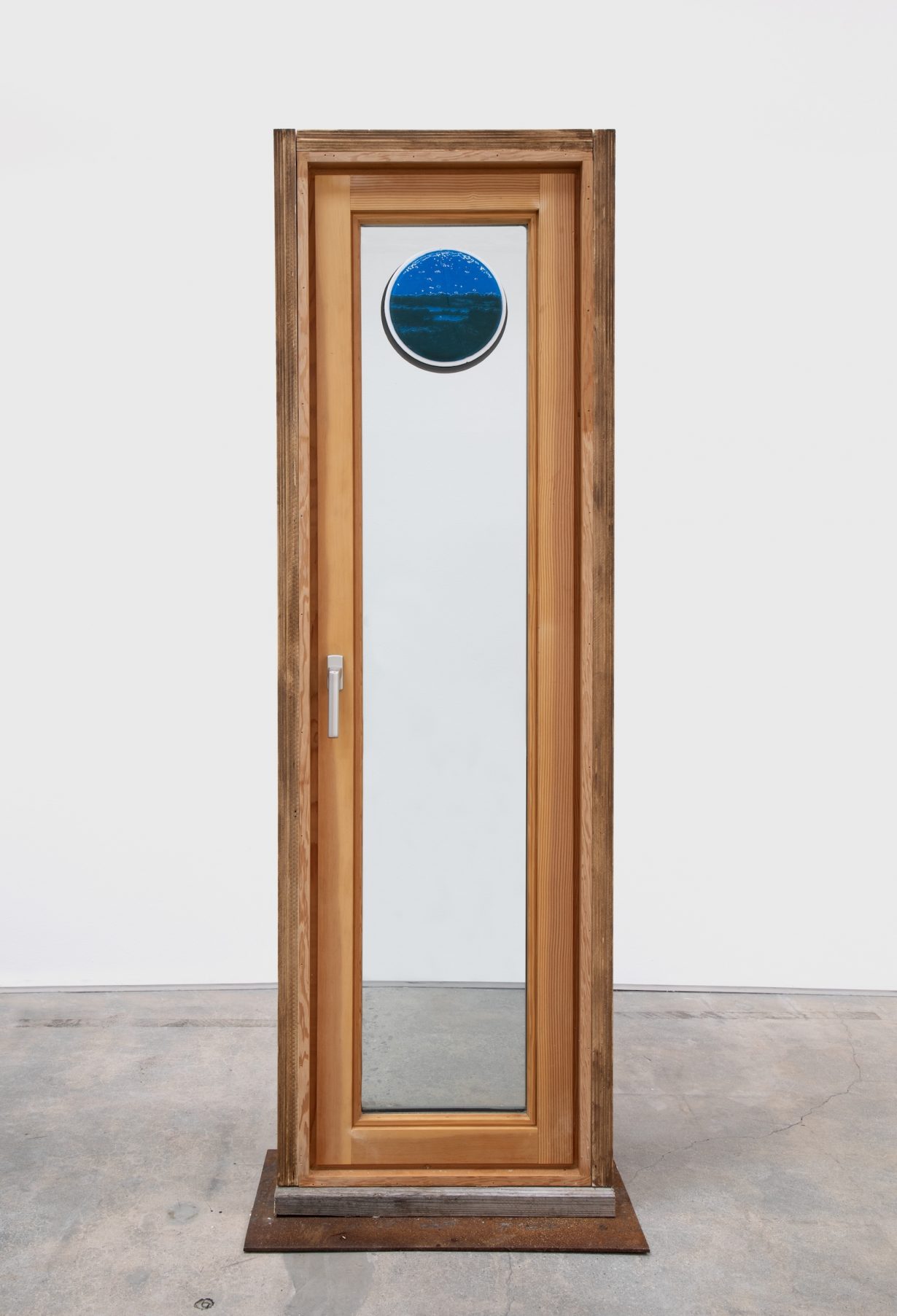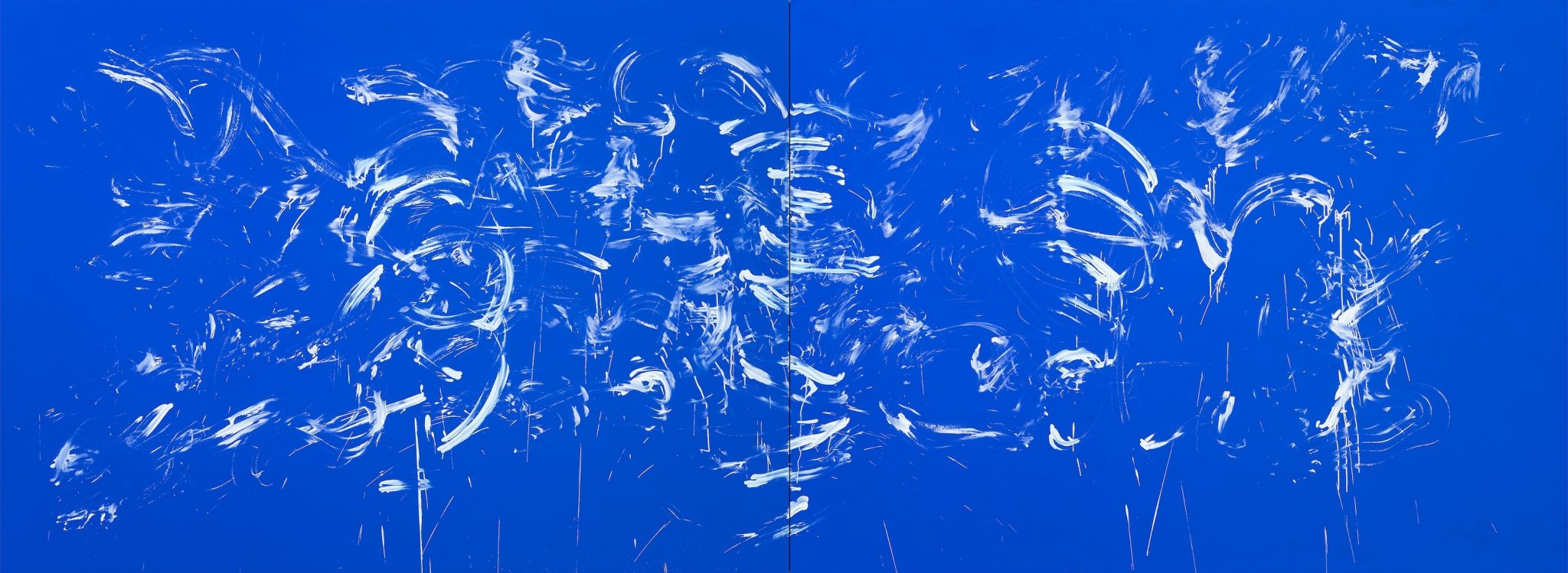Why have one review when you can have three? Here, Angella d’Avignon explores art’s capacity to heal the natural world – or extract from it
Colonial narratives will tell you that earth can be possessed, but when brought indoors – into artists’ studios, exhibition spaces and research institutions – natural materials such as rocks, wood, water and soil often evade capture. The intractability of nature is one of the main themes in Getty’s PST ART, Art and Science Collide.
In Lita Albuquerque’s solo exhibition Earth Skin, presented at Michael Kohn Gallery (many of LA’s commercial galleries are participating in PST ART), one sees buttery yellow and bloodred handprints dragged across canvases, on grounds of bright cobalt blue. These paintings, marked by traces of the artist’s body, evince a speculative and ancient process of creation, one that evokes both transcendence and tactile intimacy. Two from 2024 subtitled A Poem for A. M. pay homage to Ana Mendieta’s Body Tracks (1982), a performance in which the Cuban artist coated her hands in perhaps the most visceral fluid available in the natural world – animal blood – and ran them over white paper. As if to emphasise the direct connection between Albuquerque’s process and the natural world, a thin layer of pulverised granite has been brought in to cover three quarters of the floor in one room. While Albuquerque, a Land artist in her late seventies who has exhibited internationally but has been unduly eclipsed by artists such as Robert Smithson and Michael Heizer, seems fully in control of her paint, the presence of the enormous ochre field of ground-up rock in the gallery, against which viewers’ bodies and the surrounding canvases shrink in comparison, calls into question whether we can ever fully bring a natural material under our dominion.
In Objects for a Heavenly Cave, at Marta, 13 artists explore the subject of the Renaissance grotto. The works are all distinctly textured, asymmetric and imperfect, their outer surfaces conflating the tactile qualities of surfaces ranging from cave walls to human skin. The three-room exhibition includes the collaborative duo A History of Frogs’s scaly aluminium sconces; Masaomi Yasunaga’s grogged and roughhewn shell-spackled vases; Emily Endo’s arrangements of sleek and silky glass perfume bottles and pale volcanic rock; and Valentina Cameranesi Sgroi’s drippy, borosilicate glass vessels. These objects reiterate, in their own way, the indoor-outdoor tensions insinuated in Albuquerque’s exhibition. Each one is an attempt to meld organic forms with design, and in each one the organic can be seen wrestling and oozing its way out of human-imposed strictures of geometric form.

At Morán Morán in East Hollywood, Oscar Tuazon presents mementos from the site of the Los Angeles Water School (LAWS), a public art workshop that Tuazon established in an empty lot near the Los Angeles River to educate the public about water protection and water activism. The works on view include six stolid totemic sculptures; one is made from a found water pump while the other five are made from Douglas firs, evergreens native to western North America. On the gallery walls, enchantingly inscrutable paintings – composed of marbling ink and enamel spray on canvases, industrial tarps and topographical maps – attest to the unpredictability of water as an artistic material and collaborator. In works like Water Laws (2024), Fun Addiction (2024) and Agua Caliente (2024) one can see how water moved on the paintings’ surfaces, creating various translucencies and opacities, striations and smudges, pooling pigment into some areas and leaving others untouched.
At California State University’s Luckman Gallery, the group exhibition Sinks: Places We Call Home addresses soil contamination in neighbourhoods across Los Angeles County that have historically been treated as ‘sinks’, or reservoirs of pollution. Here, the chemist-turned-artist Maru García presents Prospering Backyards, a project that combines soil testing, environment building and community workshops. It stands out as one of PST ART’s most successful examples of a work that meaningfully combines ecology and art: García calls out the Exide battery plant in Vernon, a city a few kilometres south of Downtown LA, explicitly naming the source of the ongoing pollution in the city. Working directly and practically, García developed through fieldwork and laboratory research a compound that leaches contaminants from soil and has introduced it to the soil in Vernon, yielding real-world outcomes. Instead of extracting from the natural world, projects like García’s attempt to heal it, by adding to it the fruits of humans’ intellectual and collaborative labour.
PST ART: Art and Science Collides at various venues, Los Angeles, through 16 February
PST ART Review, Part 1: Making a Name for LA
PST ART Review, Part 2: Light and Space
